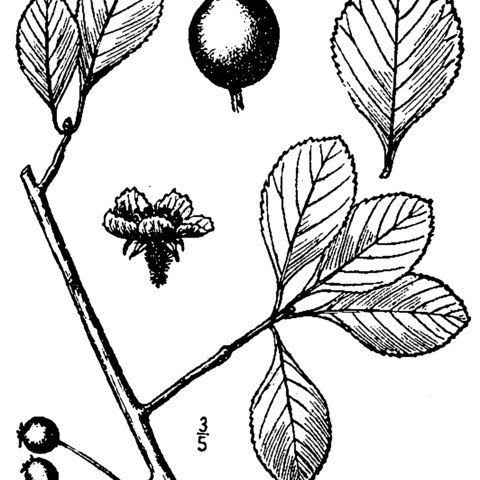Shrubs or trees, 60 dm. Stems: twigs: new growth ?orange-brown or green tinged with red?, ± pubescent, 1-year old brown, older gray; thorns on twigs ± straight or recurved, 2-years old shiny black to chestnut brown, fine or stouter, (2–)3–4(–6.5) cm. Leaves: petiole 4–6 mm, length 13–18% blade, glabrescent, eglandular; blade narrowly obovate to oblanceolate, (2.5–)3(–4) cm, coriaceous, base narrowly cuneate, lobes 0, margins finely crenate or serrate except at base, or only beyond widest part, venation craspedodromous, veins 4–6 per side, apex subacute to obtuse, ?lustrous?, abaxial surface ± densely pilose on veins, sometimes pubescent on surface, adaxial hairy young, glabrescent or becoming scabrous. Inflorescences 8–12-flowered; branches densely pubescent; bracteoles linear, margins glandular. Flowers 10–20 mm diam.; hypanthium villous or glabrous; sepals 3–5 mm, margins entire, abaxially glabrous; stamens 10 or 20, anthers cream or pink; styles 2 or 3. Pomes reddish to yellow, suborbicular, 8–10 mm diam., glabrous; sepals erose or patent; pyrenes 2 or 3.
More
Much like no. 9 [Crataegus crus-galli L.], but the lvs, twigs, and infl evidently pubescent at least when young, often persistently so, the lvs becoming glossy above. S. Ill. and w. Ky. to Ga., La., se. Kans., and Tex. (C. engelmannii; C. fecunda; C. paradoxa)


